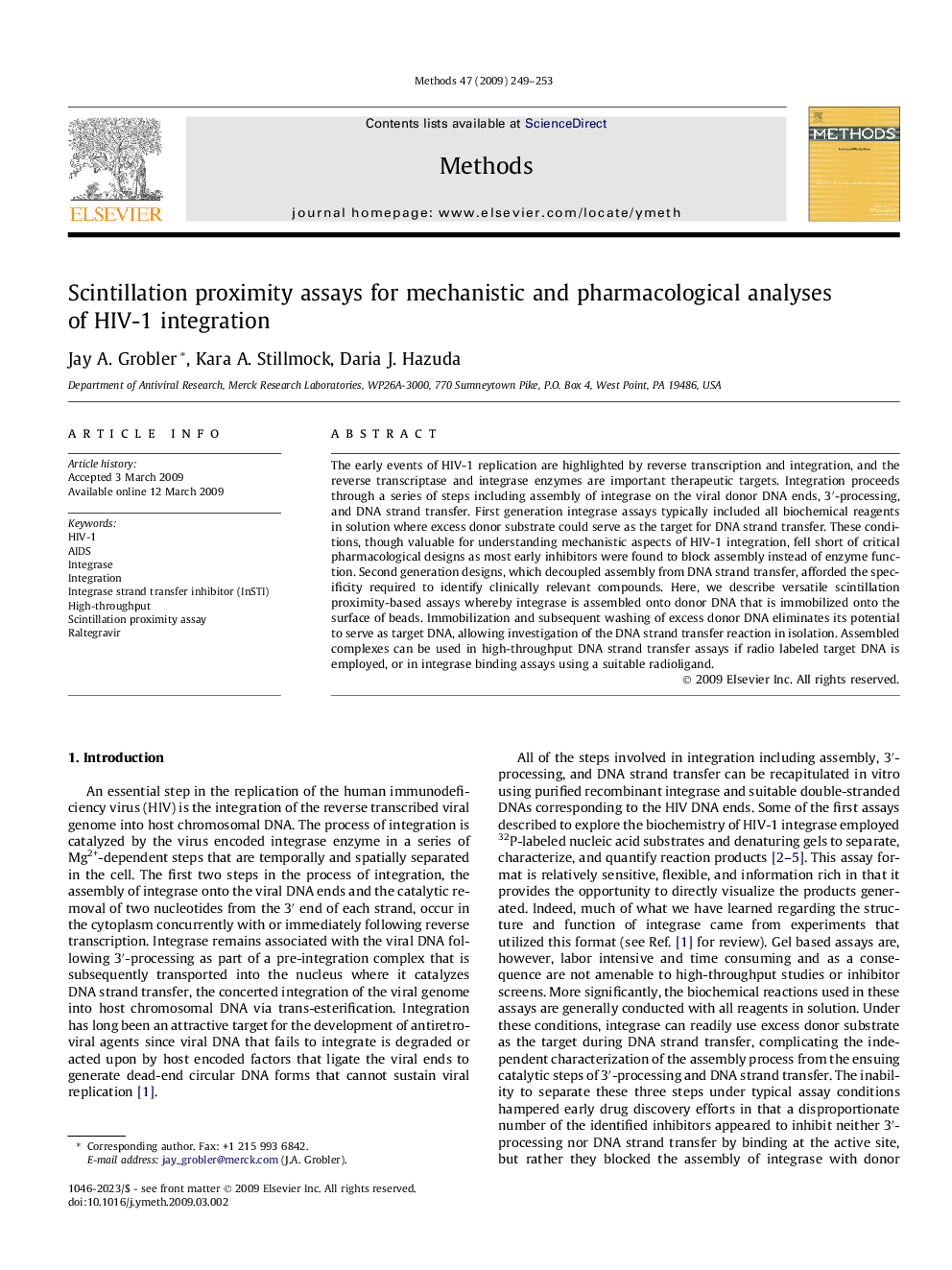| Article ID | Journal | Published Year | Pages | File Type |
|---|---|---|---|---|
| 1994226 | Methods | 2009 | 5 Pages |
Abstract
The early events of HIV-1 replication are highlighted by reverse transcription and integration, and the reverse transcriptase and integrase enzymes are important therapeutic targets. Integration proceeds through a series of steps including assembly of integrase on the viral donor DNA ends, 3â²-processing, and DNA strand transfer. First generation integrase assays typically included all biochemical reagents in solution where excess donor substrate could serve as the target for DNA strand transfer. These conditions, though valuable for understanding mechanistic aspects of HIV-1 integration, fell short of critical pharmacological designs as most early inhibitors were found to block assembly instead of enzyme function. Second generation designs, which decoupled assembly from DNA strand transfer, afforded the specificity required to identify clinically relevant compounds. Here, we describe versatile scintillation proximity-based assays whereby integrase is assembled onto donor DNA that is immobilized onto the surface of beads. Immobilization and subsequent washing of excess donor DNA eliminates its potential to serve as target DNA, allowing investigation of the DNA strand transfer reaction in isolation. Assembled complexes can be used in high-throughput DNA strand transfer assays if radio labeled target DNA is employed or in integrase binding assays using a suitable radioligand.
Related Topics
Life Sciences
Biochemistry, Genetics and Molecular Biology
Biochemistry
Authors
Jay A. Grobler, Kara A. Stillmock, Daria J. Hazuda,
